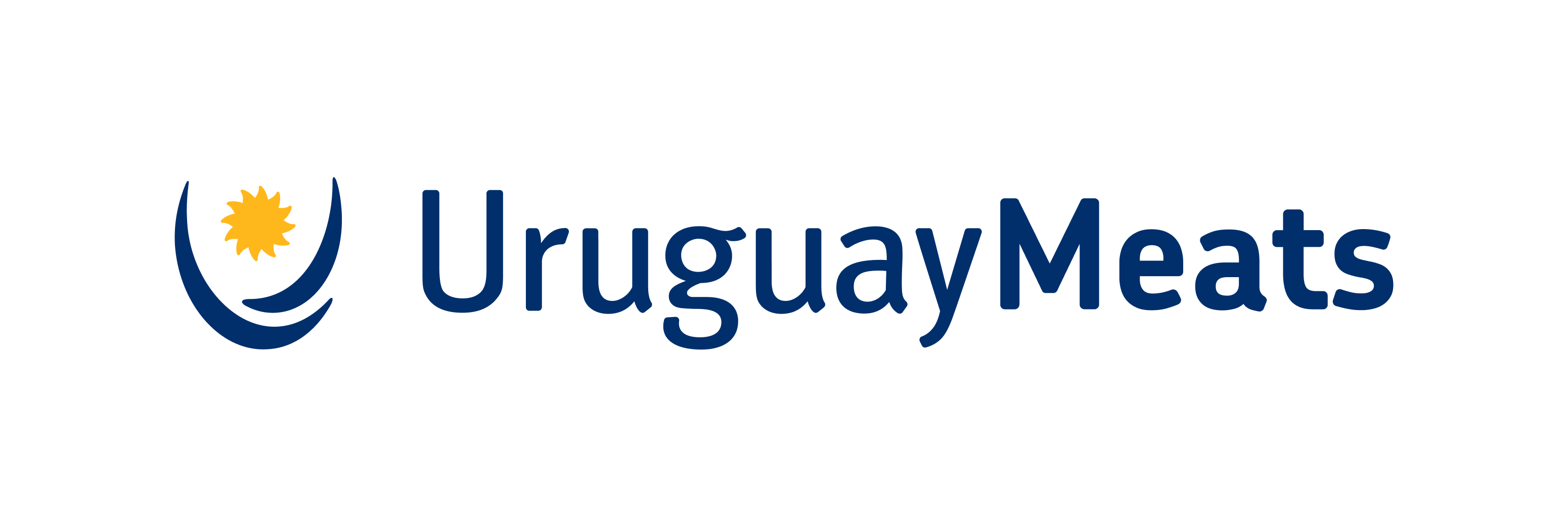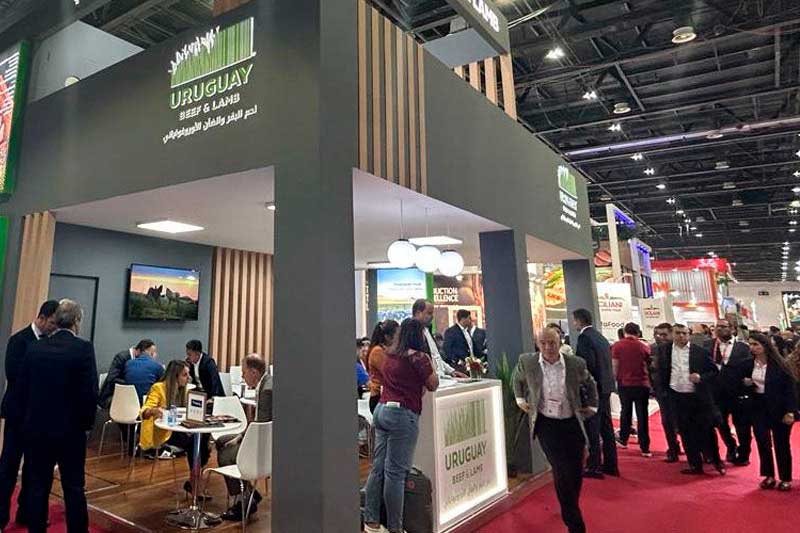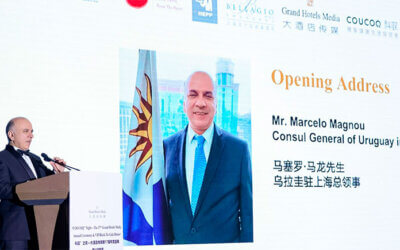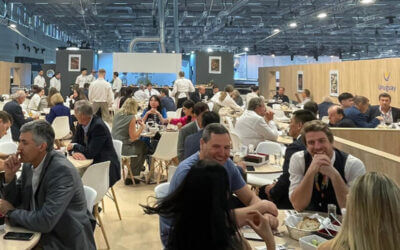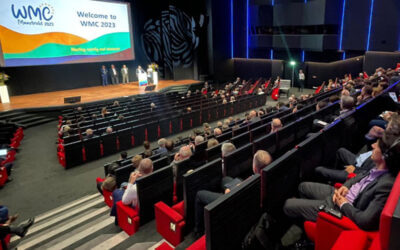Between February 20 and 24, INAC participated in the Dubai’s Gulfood Fair with a 96 m2 stand distributed over 2 floors.
The stand was shared by nine meat packing plants and seven broker and trader companies. INAC was represented by President Conrado Ferber, Board delegates José Mesa and Daniel de Mattos, and Álvaro Pereira and Cecilia Shaw from the marketing department. Also present was the Ambassador to the United Arab Emirates, Álvaro Ceriani, who visited the stand on the first day together with that embassy’s commercial attaché, Bárbara El Dbeissy.
This fair is considered one of the most important in the world in the food and beverage industry and the most important in the Middle East and North Africa.
In its 28th edition, it was attended by over 5,000 exhibitors from 125 countries, 25% more than the year before. Displayed along 24 halls of the Dubai World Trade Center, it covered an area exceeding 93,000 square meters. INAC was located in Meat Hall 3, stands A3-2, B3-1.
Traditionally, this event attracts the main players in the region. This edition was also attended by a large number of businesspeople involved in trade with China, since this was the first trade event of its kind since the quarantine international travel restrictions were relaxed in that country.
The agenda of the Institute’s official delegation at the fair had several components, including meetings counterpart organizations, such as ABIEC (Brazil), IPCVA (Argentina), USMEF (United States) and MLA (Australia). The latter was especially noteworthy, as the parties explored cooperation in the field of sustainability.
On the other hand, there were interesting exchanges with several companies specializing in the Gulf market, to learn about business in the region. Inter- and intra-country conditions are very heterogeneous. In the United Arab Emirates, for instance, more than 80% of the people are immigrants from over 150 nationalities. Consequently, their eating and purchasing habits and exposure to the media are highly fragmented.
Finally, the delegation traveled to Riyadh, Saudi Arabia to maintain business contacts in that city, and received the support of Ambassador Nelson Chabén.
Last year, Uruguay exported meat products for around US$20 million to these countries; this is just under 1% of total exports.
However, these markets are attractive because of their low levels of self-sufficiency and high dependence on imports. Furthermore, tariffs are relatively low, ranging from 0% to 5%, depending on the country and the product. The same applies to our competitors, so there is no tariff disadvantage.
In 2022, GCC countries imported meat products totaling US$5.64 billion, US$3.2 billion correspond to poultry meat (57%), US$1.66 billion to beef (30%) and US$782 million to sheep meat (13%). The United Arab Emirates and Saudi Arabia lead imports of all meats.
GCC beef imports increased by 38% in the last 10 years, while there was an increase in the share of high value exporters (Australia, New Zealand, United States, Canada).
Last year, 30% of GCC beef imports came from these markets, and their share has steadily increased every year. This shows a clear trend – there is a growing demand for higher quality meats.
